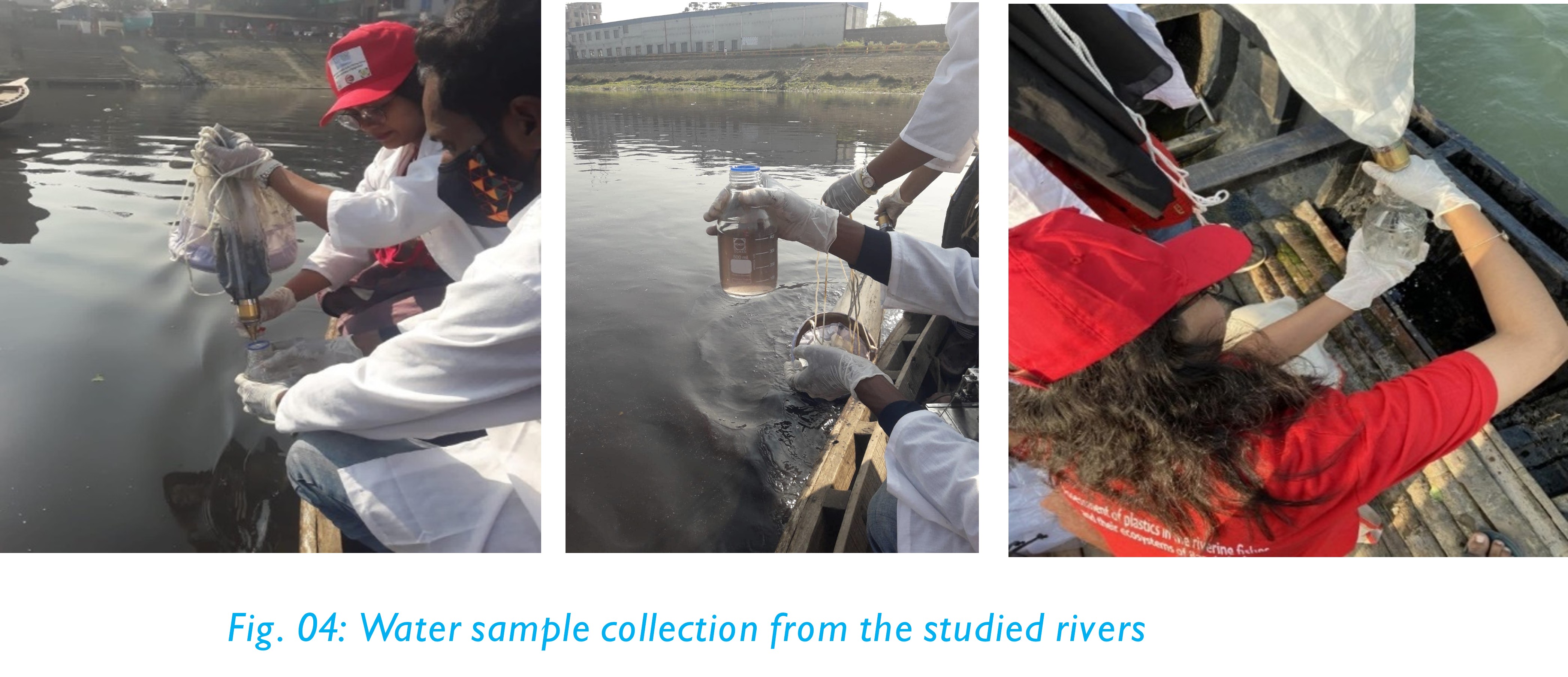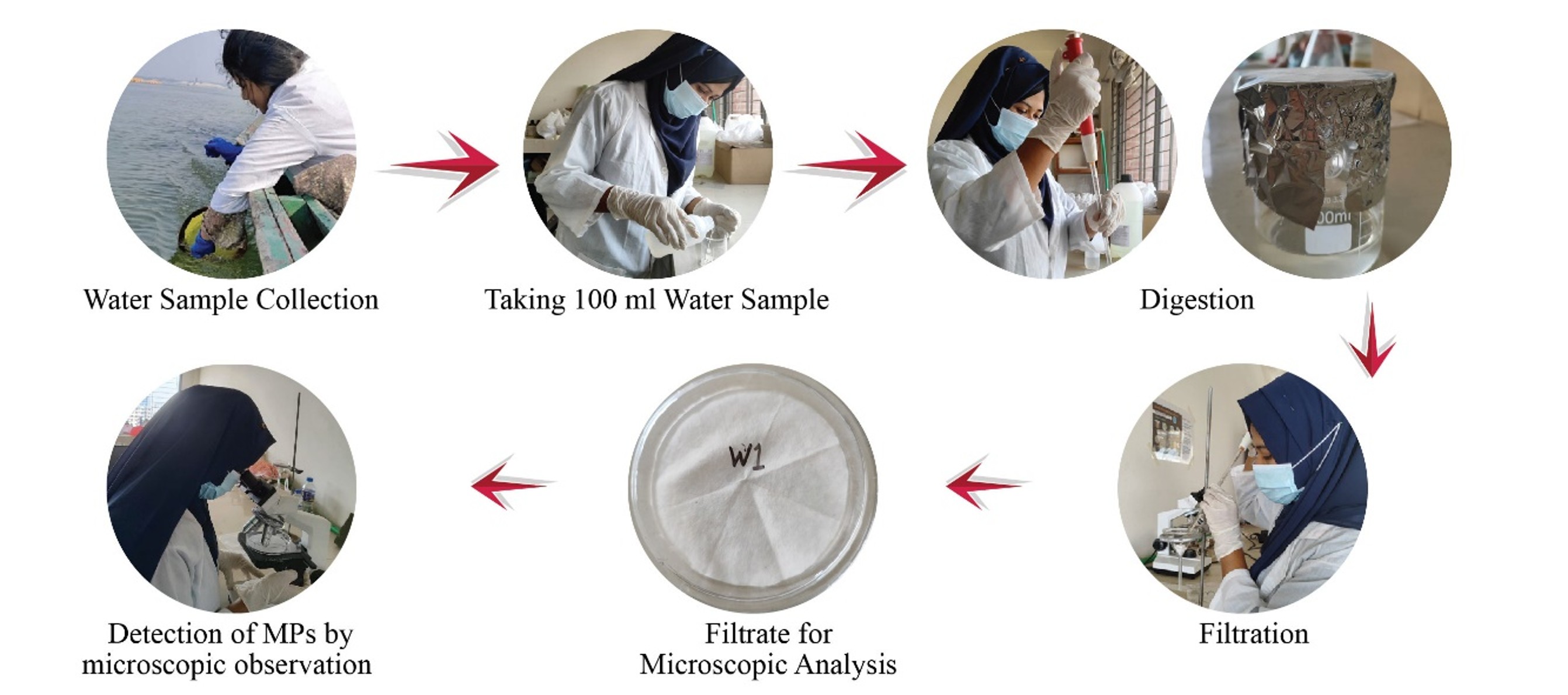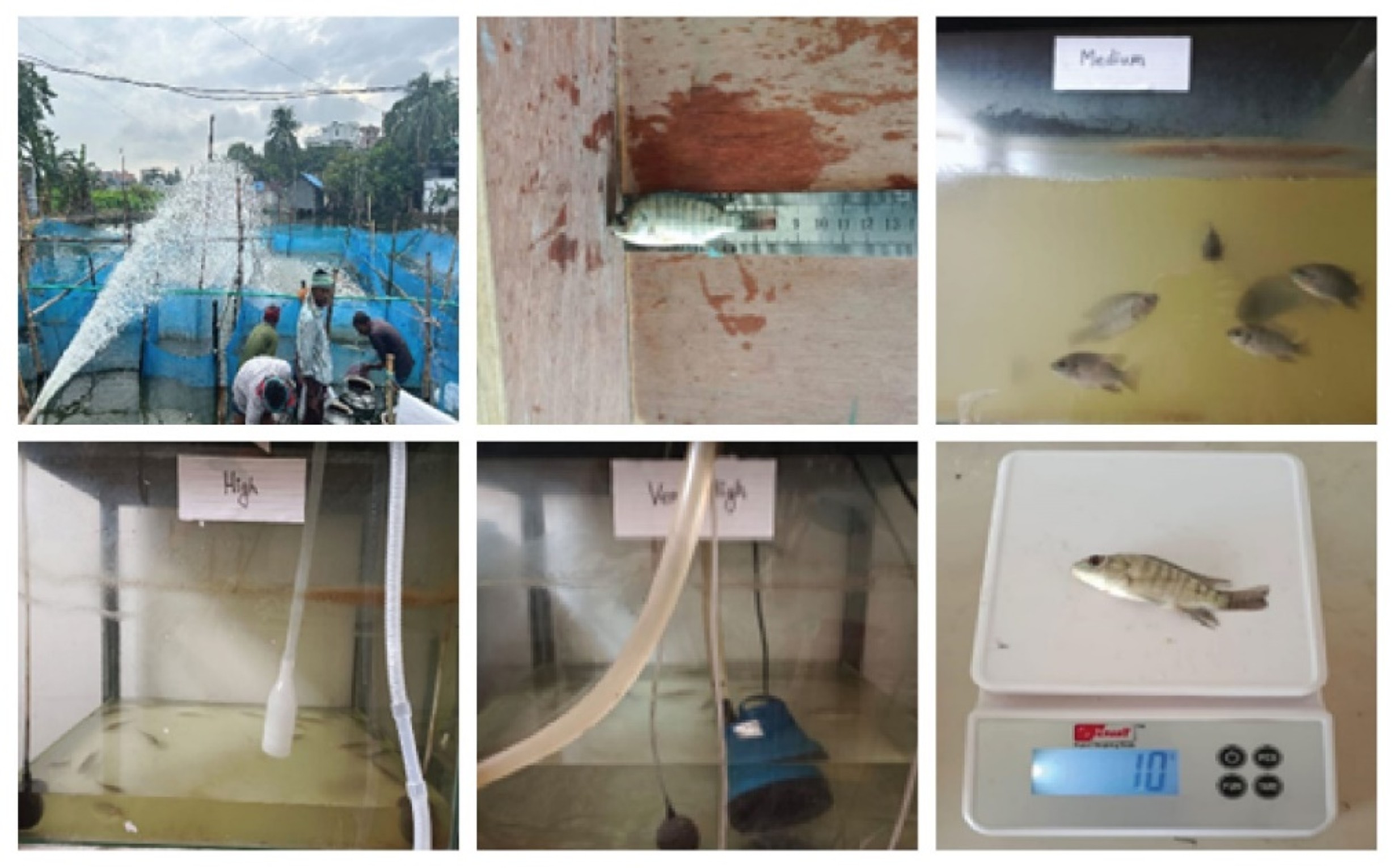Assessment of Plastics in the Riverine Fishes and their Ecosystems of Bangladesh
This project assesses microplastic pollution in ten key rivers of Bangladesh (Padma, Meghna, Jamuna, Surma, Turag, Pasur, Matamuhuri, Karnaphuli, Halda, and Sangu) to understand its impact on riverine fishes and ecosystems. It evaluates microplastic abundance, sources, and potential risks to biodiversity and human health while developing strategies for environmental conservation.
Samples (water, sediment, and fish) were collected from ten major rivers in Bangladesh. Microplastics (MPs) were extracted using density separation and identified using stereomicroscopy. Metal concentrations were analyzed using ICP-MS, and human health risk assessments were conducted based on estimated daily intake (EDI), target hazard quotient (THQ), and carcinogenic risk (CR) calculations.
Microplastic levels varied significantly among rivers, with the highest concentrations found in the Turag River. Sediment samples showed higher MP concentrations than water samples, and fish samples exhibited varying contamination levels influenced by trophic levels and feeding habits. Heavy metal analysis indicated elevated levels of certain metals in water, with potential long-term health risks. The study underscores the need for effective waste management and policy interventions.
The study highlights the critical impact of plastic pollution on aquatic life and human health. Findings emphasize the urgent need for pollution control measures, improved waste management, and regulatory frameworks to mitigate contamination risks in Bangladesh's river ecosystems.
Microplastic pollution affects fish health and market value, potentially impacting income and livelihoods of small-scale fishers. Findings provide baseline data for policymakers to implement pollution control measures that benefit fisheries and aquaculture industries. Awareness-building campaigns can help strengthen value chain linkages by promoting eco-friendly products to reduce plastic pollution in aquatic environments.
The project findings will be incorporated into national environmental and fisheries policies. Collaboration with government agencies (DoF, MoEL, BFRI) will ensure long-term implementation. Awareness and training programs on plastic waste management can be conducted for fishermen and policymakers. Further funding opportunities will be pursued to expand the study to other water bodies, along with more promo videos and awareness campaigns.



